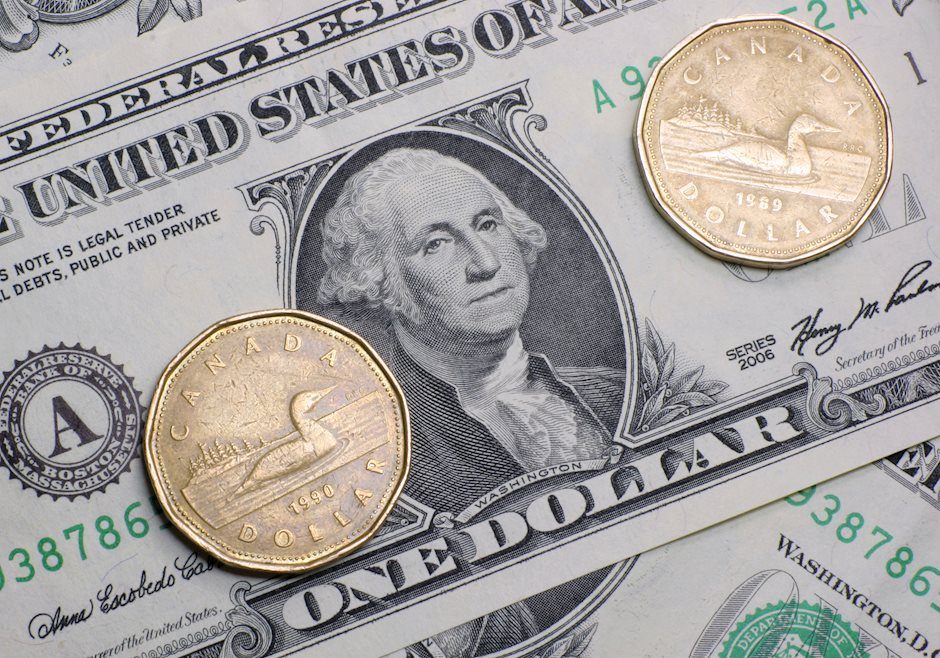USD/CAD edges lower as firm Fed rate-cut prospects weigh on US Dollar
- USD/CAD drops as the US Dollar slumps on firm Fed rate-cut prospects.
- Fears of the US entering a recession ebb due to upbeat US Retail Sales data for July.
- Weak Oil prices have weighed on the Canadian Dollar.

The USD/CAD pair falls slightly but holds key support of 1.3700 in Friday’s New York session. The Loonie asset drops as the US Dollar (USD) falls sharply after failing to hold Thursday’s recovery. The US Dollar Index (DXY), which tracks the Greenback’s value against six major currencies, slumps to near 102.70.
The Greenback has come under pressure as the confidence of investors seems to have increased that the Federal Reserve (Fed) will start reducing interest rates from the September meeting. Market expectations for firm Fed rate cuts rose after the United States (US) Consumer Price Index (CPI) report for July indicated that price pressures are on track to return to the desired rate of 2%.
Meanwhile, traders pare bets supporting the Fed reducing interest rates in September with an aggressive approach as risks of potential recession ebbed after upbeat US Retail Sales data for July and lower-than-expected Initial Jobless Claims for the week ending August 9.
The data showed that Retail Sales rose at a robust pace of 1% from the estimates of 0.3% after contracting in June. Upbeat Retail Sales indicated that the overall demand has not collapsed, which investors were anticipating from weak Manufacturing PMI and slower job demand.
Meanwhile, the flash Michigan Consumer Sentiment Index (CSI) for August has improved higher than expected. The sentiment indicator rose to 67.8 from estimates of 66.9 and the prior release of 66.4.
Globally, weak Oil prices have weighed heavily on the Canadian Dollar (CAD). Oil prices have corrected sharply as investors look for fresh developments on Middle East conflicts. Market participants are anxious over Iran’s retaliation to the assassination of the Hamas leader by an Israeli air strike in Tehran.
Canadian Dollar FAQs
The key factors driving the Canadian Dollar (CAD) are the level of interest rates set by the Bank of Canada (BoC), the price of Oil, Canada’s largest export, the health of its economy, inflation and the Trade Balance, which is the difference between the value of Canada’s exports versus its imports. Other factors include market sentiment – whether investors are taking on more risky assets (risk-on) or seeking safe-havens (risk-off) – with risk-on being CAD-positive. As its largest trading partner, the health of the US economy is also a key factor influencing the Canadian Dollar.
The Bank of Canada (BoC) has a significant influence on the Canadian Dollar by setting the level of interest rates that banks can lend to one another. This influences the level of interest rates for everyone. The main goal of the BoC is to maintain inflation at 1-3% by adjusting interest rates up or down. Relatively higher interest rates tend to be positive for the CAD. The Bank of Canada can also use quantitative easing and tightening to influence credit conditions, with the former CAD-negative and the latter CAD-positive.
The price of Oil is a key factor impacting the value of the Canadian Dollar. Petroleum is Canada’s biggest export, so Oil price tends to have an immediate impact on the CAD value. Generally, if Oil price rises CAD also goes up, as aggregate demand for the currency increases. The opposite is the case if the price of Oil falls. Higher Oil prices also tend to result in a greater likelihood of a positive Trade Balance, which is also supportive of the CAD.
While inflation had always traditionally been thought of as a negative factor for a currency since it lowers the value of money, the opposite has actually been the case in modern times with the relaxation of cross-border capital controls. Higher inflation tends to lead central banks to put up interest rates which attracts more capital inflows from global investors seeking a lucrative place to keep their money. This increases demand for the local currency, which in Canada’s case is the Canadian Dollar.
Macroeconomic data releases gauge the health of the economy and can have an impact on the Canadian Dollar. Indicators such as GDP, Manufacturing and Services PMIs, employment, and consumer sentiment surveys can all influence the direction of the CAD. A strong economy is good for the Canadian Dollar. Not only does it attract more foreign investment but it may encourage the Bank of Canada to put up interest rates, leading to a stronger currency. If economic data is weak, however, the CAD is likely to fall.
Author

Sagar Dua
FXStreet
Sagar Dua is associated with the financial markets from his college days. Along with pursuing post-graduation in Commerce in 2014, he started his markets training with chart analysis.

















